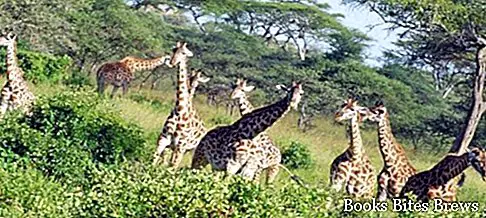What to see in the Tanzania national park, territory, flora and fauna, what are the best times to go, migration of ungulates, bird watching among spectacular landscapes.
Serengeti tourism
Located in northern Tanzania, between Lake Victoria and the Kenya border, Serengeti National Park was established in 1951 and declared a World Heritage Site by UNESCO in 1981.
The park includes boundless plains, corresponding to 14503 square kilometers of surface, where a large amount of animals live, distributed in a wide variety of terrestrial and aquatic habitats.
Lions, leopards, cheetahs, zebras, gazelles, wildebeests, buffaloes, giraffes, elephants, hippos, rhinos, hyenas and other animals, as well as many species of birds, populate these immense spaces.
Every year thousands of ungulates, mostly wildebeests and zebras, guided by the instinct for survival, migrate in search of new pastures and water reserves to meet their water needs.
During the rainy season, between January and April, the wildebeest and zebra herds live in the southern part of the Serengeti.
At the end of this period they move north-west in search of green areas, usually passing along the Western Corridor, or the western corridor, with the crossing of the Grumeti River and, between July and August, crossing the Mara River, on the border with Kenya, and then back south again in November, waiting for the new rains.
Surrounded by spectacular landscapes, in the park it is possible to observe animals throughout the year, to practice birdwatching, which consists in the observation and study of birds in nature, or to witness the birth of the wildebeest and zebra cubs, which takes place during the period included between January and February.
The main center is Seronera Safari Lodge, where the accommodation facilities and an ecological research institute are located.




